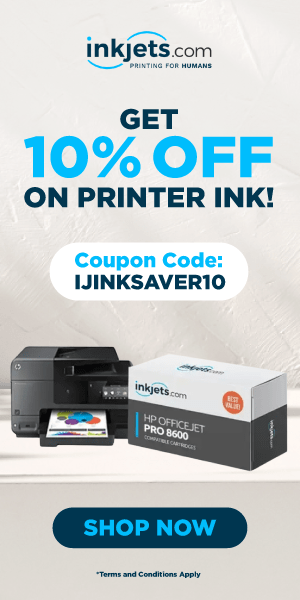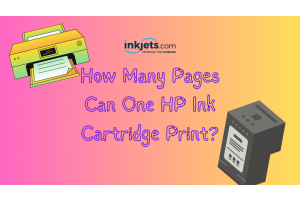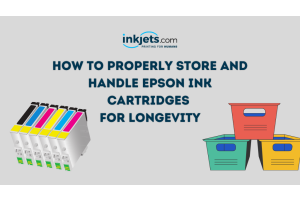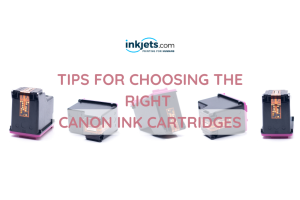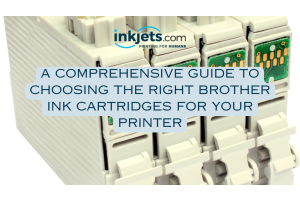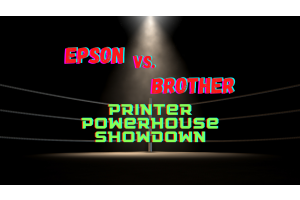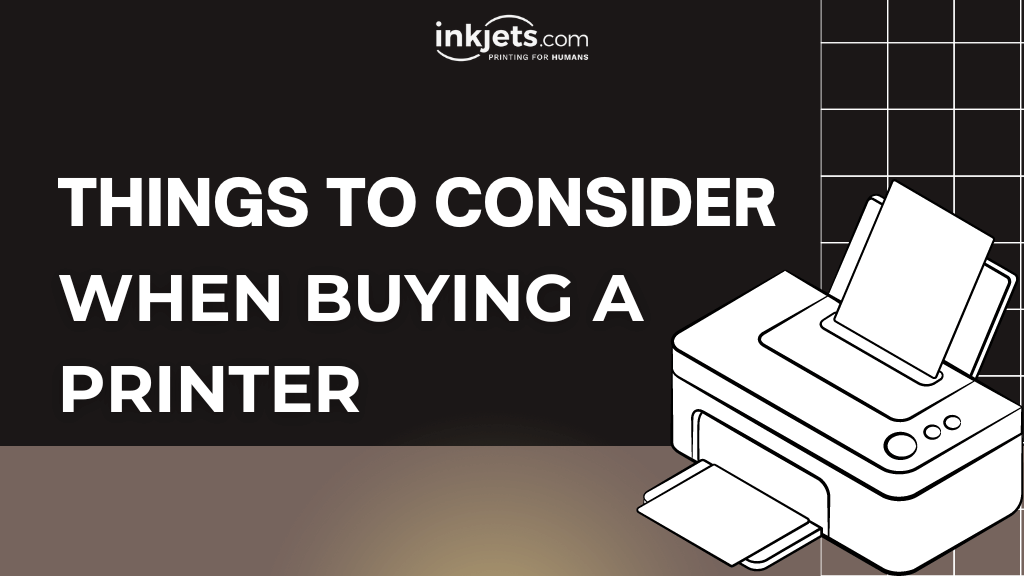
Article last updated February 1, 2023
Are you in the market for a new printer? With so many different models available, it's difficult to know which one is best for you.
Here are a few things to think about before you go shopping to avoid regretting your purchase.
Should you get an inkjet or laser printer?
Maintain Your Budget
The price of printers varies greatly. Obviously, you should not spend more money on your new device than you can afford.
However, the issue of budgeting for a printer extends beyond its initial cost. You should also consider the ongoing cost of replacement ink.
It is common for the most affordable printers to use some of the most expensive ink; this is how the manufacturers make their money. So, before you go to your local Best Buy, do some online research. Check that the price of the replacement cartridges is comparable to other models in the same price range.
Check to see if you can get third-party ink cartridges for your printer and if you can refill the ink cartridges. Use of unauthorized ink cartridges may void your warranty.

Ink type
Here are three common ink cartridge setups:
1. Two ink cartridges: one black and one color all-in-one cartridge.
2. Four ink cartridges: one black and three separate cyan, magenta, and yellow cartridges. The CMYK color model is shown here.
3. Inkwells: Instead of cartridges, the printer uses large, refillable wells to draw ink.
Inkwells are by far the most cost-effective of the three in the long run. The Epson Expression ET-3700 EcoTank, for example, can print 14,000 black pages or 11,200 color pages from a single refill. That is sufficient for two years of heavy use.
Laser printers are also available. Instead of ink, they use toner. Laser printers have sharper edges and crisper images than inkjet printers.
Which configuration is best for you is determined by how you intend to use your printer. A two-cartridge printer may suffice if you plan to print a lot of text documents with few colors. People who require professional-quality color prints should use a laser printer, while regular users can choose between CMYK and inkwell printers.
High Print Quality
Although laser printers provide the highest quality, they are also the most expensive to purchase and operate.
If you only print at home, an inkjet printer should suffice. However, the print quality varies greatly between inkjet printers.
Several factors influence print quality, including the design of the printhead, the printer's driver, and the ink quality. However, the most important spec to consider is the printer's DPI (dots per inch). It measures how well a printer can reproduce the pixels of a source image.
Inkjet printers with resolutions ranging from 600 x 600 DPI to 4,800 x 4,800 DPI are available.
Printing Speed
We've all sat impatiently as a printer produces a document at a glacial pace. It's infuriating.
If you print a lot, especially if you print documents with dozens of pages, print speed will be an important consideration in your purchase decision.
The speed of a printer is measured in pages per minute (PPM). PPM speeds for text pages and image pages will differ on a printer. When you look at a box in a store, however, you'll often only see one PPM rating. It denotes how many pages of black text the printer can print in one minute.
Again, the PPM scores of consumer-grade inkjet printers vary dramatically. You could find anything from 5 ppm to 25 ppm.
Wireless Networking
Another important factor to consider when purchasing a new printer is its connectivity. Ask yourself two questions to determine which connections you require:
1. From where are you going to print?
2. From which devices will you print?
Wired connectivity is available on all printers on the market. They can communicate with your computer through a USB port.
Some models, however, include Wi-Fi and Bluetooth connectivity. Machines that support Google Cloud Print and Apple AirPrint are becoming more common. Bluetooth is ideal for printing from local mobile devices, whereas Wi-Fi and cloud support enable you to print documents remotely while away from home.
Other considerations
Printers are capable of more than just printing. All-in-One printers can also copy, scan, and send faxes (yes, some people still do!).
All-in-one printers are more expensive, but for many people, the extra capabilities are worth the extra cost.
Keep an eye out for manufacturer-specific extras like special photo printing modes and web apps.
To send faxes, you do not need to use a printer. You can also send faxes from your computer while using Android.
Paper Type
Legal-sized paper is not supported by all printers. Similarly, many all-in-one printers' scanner beds are too small for legal documents.
On the top of some high-end all-in-one machines, there is a separate scanner feeding tray. It can scan larger documents as well as stack multiple papers and scan them all into a single PDF file.
Desktop, portable, or compact?
Printers come in a variety of shapes and sizes. There are now many compact versions available if you need a printer that fits in a small space. Sure, you'll have to do without the scanner and copier, but it's a good option for infrequent users.
Some devices are significantly larger at the other end of the scale. They are typically aimed at the small office market and would be superfluous in your home.
Remember that technology should look good; don't buy anything that doesn't fit in with its surroundings.
Which Printer Is Right for You?
There are too many variables to name a single printer that is ideal for you. Instead, you should weigh the advantages and disadvantages of the models you're considering against the criteria we've discussed.


